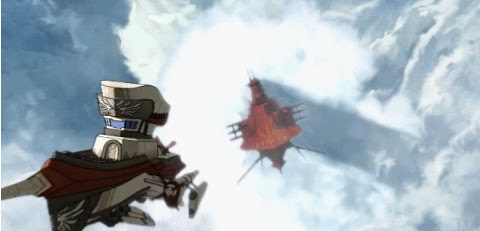This article is no revolutionary insight but rather a concise overview for the aspiring video game developer, who is also a creator of fiction. After a search I didn’t find an article outlining the elements I have in mind so I thought hey! Why not write it myself?
Am I a video game developer? No, but I have played a ton of games, developed an understanding of what works well, and I’m considering the idea of shifting from player to developer.
Somehow writing in video games is not discussed often enough and I’d like to help fix that. I’ll use Trails in the Sky SC as a case study to illustrate the points discussed.
A quick refresher on worldbuilding
Worldbuilding is the process of creating a fictional world and making it interesting on its own right, separately from the story.Worldbuilding is comprised of:
- Nature: includes climate, geography, fauna and flora. Are the animals and plants different? Are there notorious landscapes like deserts or oddly-shaped hills? What kind of natural resources are available and where are they gathered? Have you tried drawing a map of your world?
- History: what are the big events that shaped the present? Have wars occurred before and if so, why? Are there technological breakthroughs worth mentioning? How is society organized and what are are the local forms of governments?
- Economy: Where do trade routes start and finish? Are countries self-sufficient or are they reliant on each other for their respective needs? Which cities are known for high commercial activity? What kind of industries is prominent? Is there a black market somewhere and if so, what can you find there?
- Culture: Are there festivals, celebrations and national days? What about fashion sense and architecture? What are common beliefs and accepted practices? Do the people have their own legends, myths and superstitions?
- Prominent landmarks include a huge lake, four ancient towers, a military fortress, etc;
- The Orbal Revolution brought about a drastic evolution in transport, communication and weaponry;
- Ten years before the game’s events, Liberl went through a war against its neighbor, the Erebonian Empire;
- The citizens share faith in the goddess Aidios.
What makes worldbuilding in video games different from other media
A huge part of gaming’s appeal lies in exploration and the joy of discovering a new environment. RPGs, as well as other genres are popular because they feature large and diverse areas with a lot of places and people.Due to the interactive nature of a game, you give the player total choice to advance at his own pace. He can proceed with the story or stop and do some sightseeing.
This is a freedom you can’t find in other media, in which you are merely shown the setting. In video games you can check every corner, talk to the local people, wander in the fields, and that makes for a level of immersion that is unparalleled. No wonder open world games are so popular. You’re not reading a description or seeing an establishing shot. You are there.
In other media you must exercise narrative focus. If you wander too far from the main cast and the plot, then the pacing suffers and the audience is annoyed. In video games the audience (players) decides its own focus, whether to rush through the main plot or take its time to explore and learn more about the world. The player has both options and can experience the worldbuilding up close.
But that’s assuming your world is interesting to begin with.
Make sure your setting is worth exploring
This is why the Assassin’s Creed series changes locations with each new main entry, from the Middle East to Europe to the United States. If your world is generic and boring, no one will bother exploring it. Stay away from the generic medieval worlds with castles and green fields; we’ve seen too many of these. Have some elaborate architecture, weird plants or some peculiar customs. Give players a reason to feel invested in your world.Along with some fantasy vibes, the world of Trails in the Sky has a lot of machinery in it (we see firearms and even tanks), however it’s not as modern as our own world. Sunglasses are a rarity and people are still taken aback by the novelty of phone communication and escalators. Meanwhile airships are common and used for traveling, freight and military operations. Hence the title of the game.
How to implement worldbuilding in video games
1) The main plot
This is the most straightforward way at your disposal. RPGs and other games often feature large settings where you have to travel across countries and continents. As your characters arrive at a new place you can drop bits of information about its history and the people who live/work there .
See if the events of the story allow for exposition, then use dialogue to impart information about technology, type of government, traditions, etc. Just be careful not to indulge in longwinded presentations.
2) Sidequests
Usually, the reward for completing sidequests is money and rare/useful items. There are also cases where sidequests are designed to flesh out the party characters.
On top of that, learning more about the world’s lore can be enough of a motivation to put the main quest on a hold and delve into sidequests.
In the case of Trails in the Sky, it was nice to earn some pocket change to buy new weapons, but more than that, it was interesting the test the capacity of a newly developed gun, help a guild of fishermen, share the hardships of miners and learn the importance of keeping a good image in high society.
3) NPC dialogue
By using NPCs (Non Playable Characters) you can cram in as much exposition and backstory as you can. The player always has the freedom to make small talk or ignore them. Through NPCs you can depict the culture and economy aspects of society. A girl is raving about a popular brand, or a merchant is complaining about bandits. Think up and express the daily occupations and worries of the populace: buying goods, relationships with spouses, caste struggle, seeking status…
Here’s how you breathe life into fictional towns:
- NPCs react to the plot
At some point in Trails, a dragon rampages in a town and destroys the local market. Needless to say, children are fascinated, adults are still shocked and in disbelief and merchants have their business ruined.
- NPCs have their own stories
4) In-game database
If your game has a rich history and/or its own jargon, you can include an in-game encyclopedia through books or databases.
However, the plot must be fairly understandable without having to resort to the in-game wiki. You still need to handle the exposition aspect of storytelling without falling in its pitfalls (heavy info dump or cases of “as we both know, Bob”) which destroy pacing and believability.
Final Fantasy XII has in-depth descriptions of the various monsters and enemies you encounter and slay. The world has its own mythology, well-documented bestiary and monster-hunting business and lore.
Not every player will care to read these entries – and that’s fine, but those who enjoy this kind of content will appreciate the effort that went into it and get a more memorable experience out of it.
Trails in the Sky, you can buy newspapers and access a couple of computers.
Use this method when you have already used the three above and there is still information you want to convey. Never use a database as a lazy substitute for plot-related exposition.
The game’s key concepts and events MUST be clear enough to the player. The plot must be self-sufficient. The in-game database is for:
- Refreshing a player’s memory if he hasn’t played the game in a while;
- Presenting information that is not crucial but still interesting.
Worldbuilding in video games is a joy for both developers and players
It’s been a long journey with Trails in the Sky but every session was a pure joy. The battle system is brilliant (you have to manage the positioning of characters and the timing of attacks) and the story holds one of the best writing I’ve seen in a video game.The plot may be slow, but it’s still engaging thanks to colorful characters and clever dialogue. On top of that, the setting is vivid and charming in its own right. The worldbuilding is so rich, you can’t even keep track of it. The developers took the time to think of all these little stories and the interactions among citizens. They could have spared themselves the effort but they did it anyway. This dedication for the art of fiction won the hearts of the players and now the series enjoys a solid, dedicated fanbase. The Trails series is not just good, it’s crazy good.
If you are interested in video game development and considering starting an indie venture in the future, then you’ll probably have to deal with worldbuilding. Take your time to shape a world worth spending time into.
That said, don’t make the mistake of being way too ambitious. The incredibly large worlds we know and love come from huge companies, in which tens if not hundreds of people work for years to get a game out. If you’ve made it this far into this article, chances are you’ll be on your own or part of a small team. Keep the scale of your game realistic and feasible. Aim for quality instead of quantity. And this is where condensed worldbuilding comes in.
Keeping the scope of the setting restrained will allow you to dedicate more time and effort in its richness. You can add more NPCs and flesh them out by updating their dialogues after key events. Include information about history and society to give your setting a sense of authenticity. Most players are thirsty for juicy bits of worldbuilding and provided you have implemented it the right way, you’ll have more chances of achieving critical and commercial success.
How do you feel about worldbuilding? What other JRPGs you think have stellar worldbuilding?





